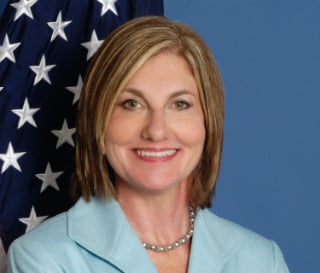By Debbie Matz, Chairman, National Credit Union Administration
If you saw Skyfall recently, you were reminded that James Bond drove a 1965 Aston Martin. While beautiful and fast, this classic car did not have power steering, seat belts, airbags, or anti-lock brakes—safety features that are standard in most cars today.
Like driving a fast car, the financial marketplace can be risky; and standards change with the times. Therefore, the rules of the road that guided credit unions in earlier decades may not meet their needs or their members’ today.
Because the credit union industry is changing at a fast pace, NCUA must stay ahead of the curve. That’s why we’re modernizing NCUA inside and out.
Let me introduce you to the new NCUA, which consists of new people and new policies.
New People
As senior employees retire, we’re replacing them with new blood from outside NCUA, as well as talented staff promoted from within.
Comparing 2013 to 2009, 75 percent of our offices have a new director.
Forty percent of our examiners have been with us fewer than five years.
We’re hiring for different qualifications and diverse backgrounds. We’re not just hiring accounting grads. We’re hiring folks with economics degrees, or specialized expertise in business loans, investments, capital markets, and technology.
The tools of the trade are changing—and so is our workforce. Of course, we’re not going to stop hiring accountants. But the new NCUA employs a workforce with expertise that fits new credit union needs.
This means our examiners are not only trained to supervise credit unions, but also in the art of effective communications and handling difficult situations. These are skills that you should expect in your examiner.
New Policies
As credit unions grow and become more complex, they require more attention. So we’re streamlining exams for the smallest credit unions, and shifting examiners where their work is most effective in protecting the National Credit Union Share Insurance Fund.
Our new Office of National Examinations and Supervision will ensure that the largest credit unions receive specialized oversight to remain safe and sound.
For all credit unions, we’re providing consistency across the country. Examiners from different regions will use the same approach. Unlike all other financial services regulators, we even publicized portions of our internal National Supervision Policy Manual, describing what to expect when an examiner arrives. That’s real transparency.
Meanwhile, through my Regulatory Modernization Initiative, we’re streamlining and updating regulations. Many of these changes remove burdens and provide responsible regulatory relief. We’ve already eased reporting on troubled debt restructuring, initiated more low-income designations, expanded the range of video tellers, allowed larger fleets for member business loans, lengthened maturities for loan modifications—and exempted more than two-thirds of all credit unions from certain rules.
Credit unions are constantly innovating. But there are some needed products that credit unions don’t offer—because you’re not permitted. So we’re exploring more changes to permit even more innovations.
For example, some credit unions want to hedge interest-rate risk with derivatives. Derivatives can be extremely complex—and many can be very risky. But we cannot say no simply because we’ve said no in the past. NCUA cannot hold credit unions back. We must guide credit unions forward into a future that meets their members’ needs and maintains the highest standards of safety and soundness.
Because credit unions must continue to grow and thrive, NCUA must evolve to adapt to their changing needs.
My goal is for the new NCUA to set the standard for effective regulation. Whether NCUA reaches that goal will ultimately be judged by your success.







